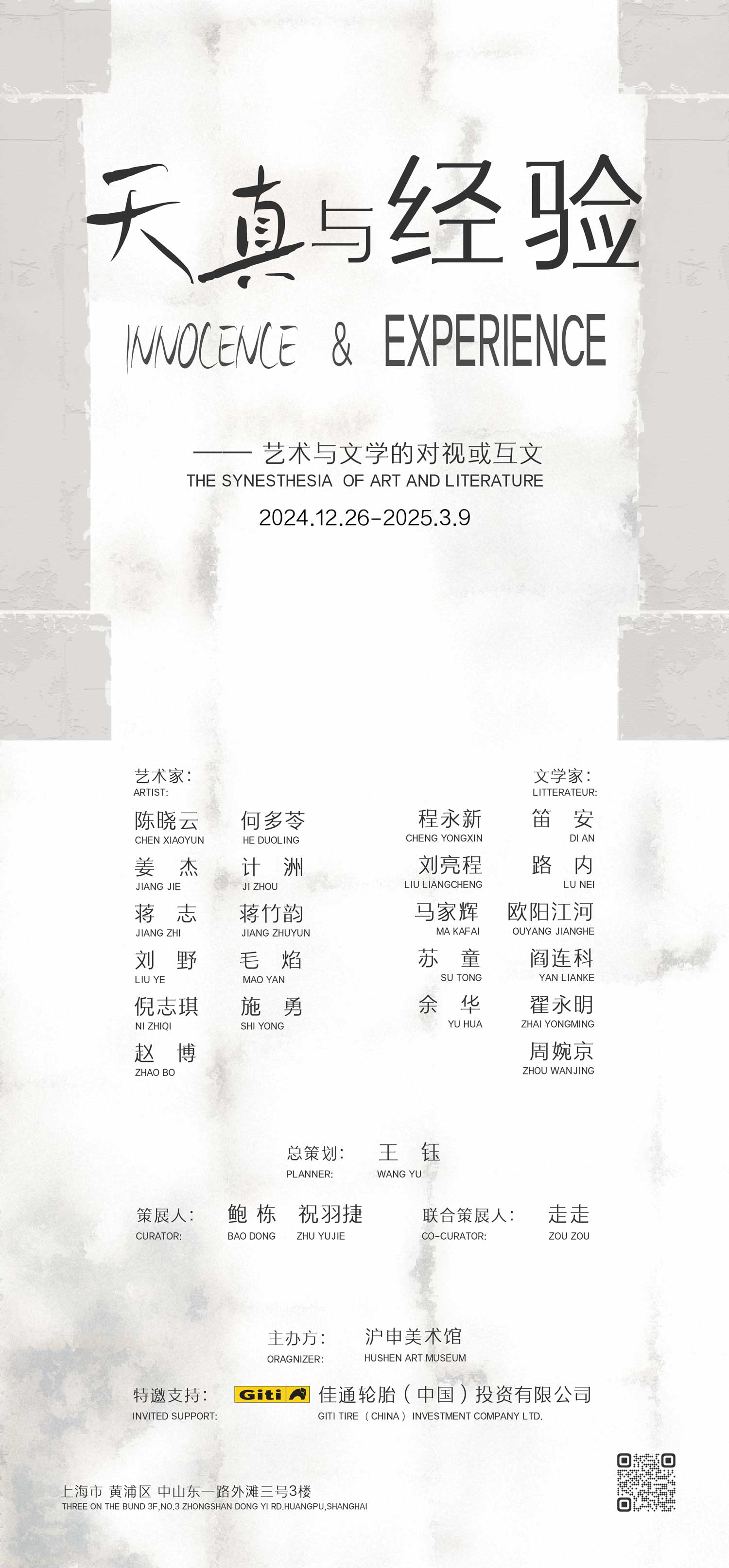This December, Hushen Art Museum is pleased to announce its first exhibition since its establishment, titled "Innocence and Experience". This exhibition brings together eleven Chinese contemporary artists He Duoling, Mao Yan, Liu Ye, Ni Zhiqi, Ji Zhou, Shi Yong, Chen Xiaoyun, Jiang Zhuyun, Jiang Zhi, Jiang Jie, Zhao Bo and eleven Chinese contemporary writer Yu Hua, Su Tong, Cheng Yongxin, Liu Liangcheng, Zhai Yongming, Ouyang Jianghe, Yan Lianke, Ma Kafai, Lu Nei, Di An, Zhou Wanjing. The exhibition is on view from 26th December until 9th March 2025.
The evolution of art history reveals the profound interplay between images and texts, enduring through the vicissitudes of time. By the 18th and 19th centuries, visual art had already birthed literary expressions of remarkable stylistic sophistication. For instance, Albrecht Dürer’s "Cognitive Imagery" transformed Iconographie into textual form, while the Romantic poet and artist William Blake fused poetry and illustration in Songs of Innocence and Experience. This seminal work explores two contrasting yet intertwined realms of the human psyche—innocence and experience. The dichotomy of innocence and experience, marked by tension and integration, illuminates the multifaceted nature of human perception and emotional engagement with the world.
Innocence represents a state of introspection, marked by purity and unblemished simplicity, akin to Songs of Innocence. It signifies an unspoiled perspective and an intuitive perception untouched by worldly experience. Innocence embodies an openness to the world, brimming with curiosity, imagination, and a spirit of exploration. Its essence lies not in ignorance but in an innate understanding unshaped by external experiences or societal norms. This state emphasizes direct sensation and primal experience, offering a raw and unfiltered reaction to life. It harbors boundless possibilities and stands as a quiet resistance against rigid modes of thought.
As the poet T.S. Eliot once remarked, "No poet, no artist of any art, has his complete meaning alone." The expressions of art and literature transcend the confines of singular perspectives, dismantling the traditional order of language. When artworks are likened to texts, their deconstruction, reconstruction, and the viewer’s interpretation collectively shape an expansive intertextuality. Within this intertwined relationship, art and literature exist in symbiosis and mutual integration, their textual meanings continually evolving. This dynamic interplay sparks new interpretations and fresh layers of understanding, enriching both mediums in the process.
This exhibition, through the dual yet interdependent paradigms of Songs of Innocence and Songs of Experience, invites prominent literary figures and artists from China to explore the profound potential of the interplay between text and image. It seeks to illuminate the interactivity and symbiosis inherent in artistic creation and audience interpretation. In this dialectical process, innocence and experience are not merely binary opposites but permeate and influence one another, collectively shaping a more nuanced and multidimensional understanding of the world.

